Replacing Windscreen Wiper Blades
When the wipers no longer clean well, the blades are probably worn or cracked.
Replace them.
To prevent damage to the wiper arms and other components, do not try to sweep the wiper arm by hand.


When raising both windscreen wiper arms, raise the driver's side wiper arm first. When lowering the wiper arms, slowly lower the wiper arm from the passenger's side first while supporting it with your hand. Forcefully lowering the wiper arms could damage the wiper arm and blade, and may scratch or crack the windscreen.


(Type A)
-
Raise the wiper arm.
-
Open the clip and slide the blade assembly in the direction of the arrow.

-
Tilt the blade assembly and remove it from the arm.

To prevent damage to the windscreen let the wiper arm down easily, do not let it slap down on the windscreen.
Close Caution View Caution
View Caution
-
Pull down the blade rubber and slide it out of blade holder.
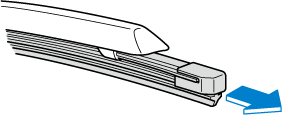
-
Remove the metal stiffeners from each blade rubber and install them in the new blade.
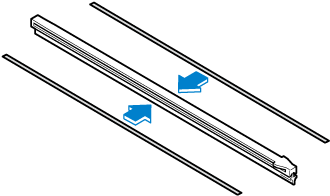
-
Do not bend or discard the stiffeners. You need to use them again.
-
If the metal stiffeners are switched, the blade's wiping efficiency could be reduced.
So do not use the driver's side metal stiffeners on the passenger's side, or vice versa.
-
Be sure to reinstall the metal stiffeners in the new blade rubber so that the curve is the same as it was in the old blade rubber.
Close Caution View Caution
View Caution
-
-
Carefully insert the new blade rubber. Then install the blade assembly in the reverse order of removal.
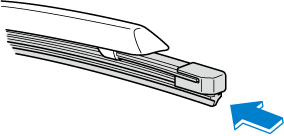
(Type B)
-
Raise the wiper arm and turn the blade assembly to expose the plastic locking clip.
Compress the clip and slide the assembly downward; then lift it off the arm.
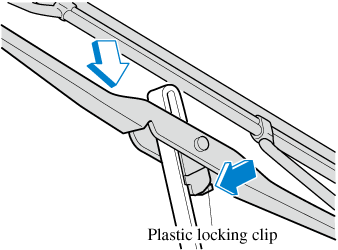
To prevent damage to the windscreen let the wiper arm down easily, do not let it slap down on the windscreen.
Close Caution View Caution
View Caution
-
Hold the end of the rubber and pull until the tabs are free of the metal support.
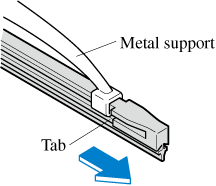
-
Remove the metal stiffeners from each blade rubber and install them in the new blade.
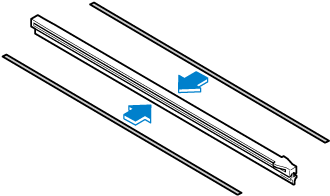
-
Do not bend or discard the stiffeners. You need to use them again.
-
If the metal stiffeners are switched, the blade's wiping efficiency could be reduced.
So do not use the driver's side metal stiffeners on the passenger's side, or vice versa.
-
Be sure to reinstall the metal stiffeners in the new blade rubber so that the curve is the same as it was in the old blade rubber.
Close Caution View Caution
View Caution
-
-
Carefully insert the new blade rubber.
Then install the blade assembly in the reverse order of removal.

Install the blade so that the tabs are toward the bottom of the wiper arm.
Close Note View Note
View Note


 Read this first
Read this first



















